Frameworks and lessons from my second year
I joined the YouTube Ads Video Creation team at Google two years ago as my first gig out of grad school. Getting into Google was a dream come true, but it wasn’t easy. It took a lot of deliberate practice and luck.
Time flies. I’m now passing the peak of “Mount Stupid” where I constantly doubted myself and climbing up the “Slope of Enlightenment” (Dunning–Kruger effect).
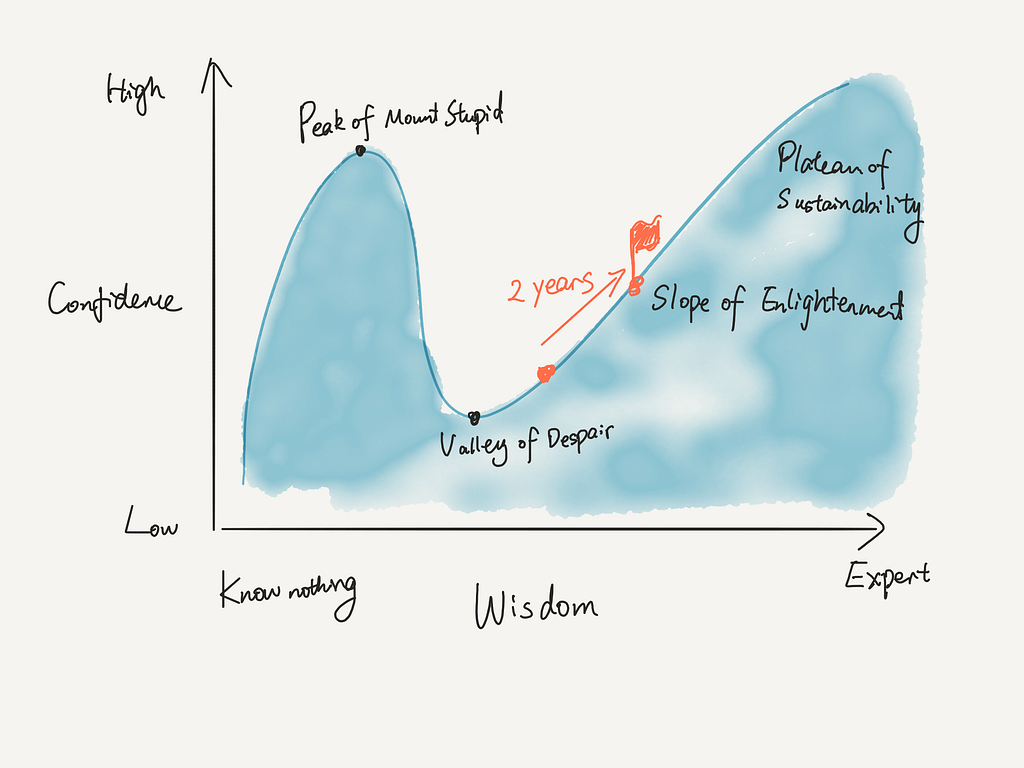
Now entering my third year, I’m asking myself: “What are the biggest things I’ve learned?” Here are three insights.
1. Learn what to learn
During my first three months at Google, I was so overwhelmed with the sea of information, teams, and products; I felt like a drop of water. With so many articles, study materials, decks, and recordings, I was eager to gobble up anything I could for fear of missing out, like a Pac-Man character trying to eat every pellet.
I still have that constant urge to learn everything, but now I feel more relaxed and confident that I’m moving towards something really important to me. How? I have a framework on what to learn and why that’s crucial: Hierarchy of Knowledge.
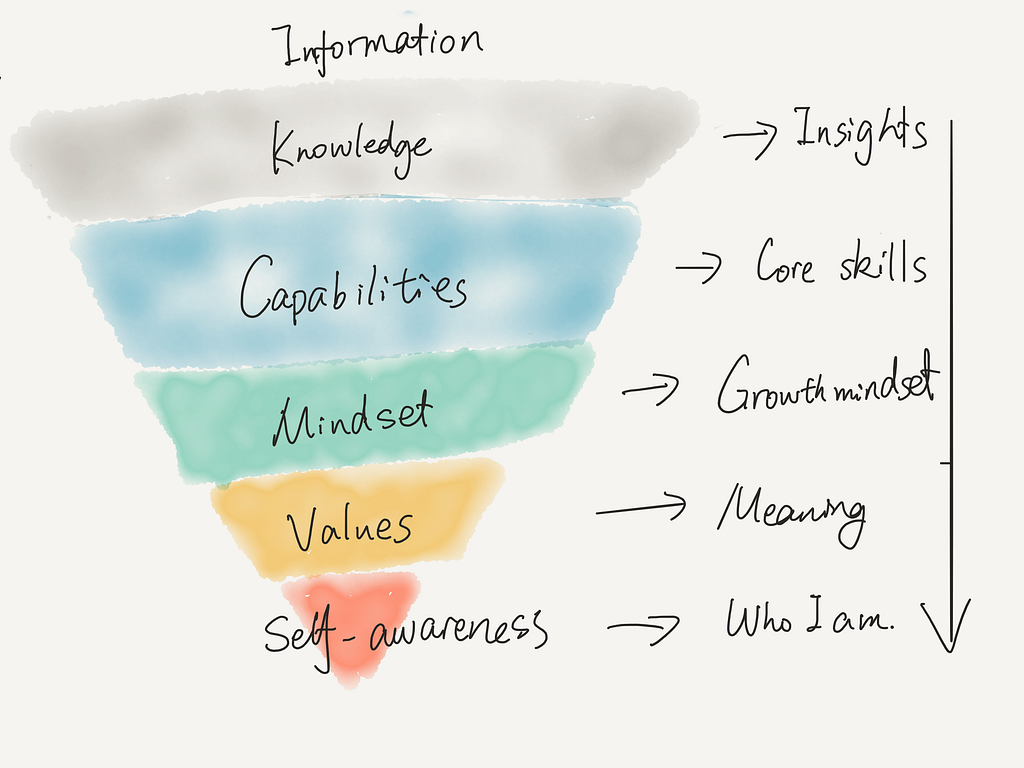
Information is the broadest tier, what we typically gain from reading news and articles. For example, what are the latest design trends? What are the different design patterns? What are typical research methods we can use on our team?
Knowledge is the foundation of greater insights, and helps us ask questions like: What are the underlying rationales? Why are Chinese apps designed differently from US apps? Why is YouTube different for emerging market users? Why should we use usability testing over surveys for a project?
Capabilities are the professional skills you want to develop. One example of a core capability I’ve been developing is strategic thinking, a skill to help navigate ambiguous problem spaces, tease out hypotheses, and test them deliberately. I recommend reading Cracked it! or Pyramid Principle if you’re interested in learning more.
There are more capabilities, like business acumen, productivity, leadership, flexibility, or team management. The important thing is to know what’s important to you and flesh out an action plan to learn them.
Mindsets are beliefs that propel you forward to achieve your goals, such as having a growth mindset and positive core self-evaluations. There are small exercises to train your brain to become more positive. Practicing them every day will create lasting, positive change.
Values reflect what is important to you; They help you understand what success means to you and how to enjoy meaningful work. For example, my core values are continuous learning, personal growth, and making a difference. When you feel stuck, it may be a signal that you want a new environment to demonstrate your values more fully. Having that knowledge will empower you to make decisions more confidently. I highly recommend doing a Personal Values Assessment to understand how values influence you.
Ultimately, these tiers all link back to self awareness, or seeing ourselves more clearly. I’ve gained deeper self-knowledge over the past two years. Now, I am able to connect some dots, and I am still drawing new ones to connect in the future.
2. Be flexible on frameworks
Frameworks are prepackaged shortcuts to solve a problem. Evidence shows that people who think with frameworks consistently outperform those who don’t. We have different frameworks under our belt, like the iterative UX process, Critical User Journeys, Porter’s Five Forces — to name a few. Those frameworks are great starting points; The issue is that real life is more complicated. Not only may the frameworks not be applicable, but if we use one uncritically, we may also accept all the assumptions a framework takes for granted.
To give you a few examples:
- Contrary to the perceived linear UX process, design processes may be more complicated and messy in reality. Back-and-forth discussions at the start of a project may make you feel frustrated, like you’re not moving forward. If your team is using the wrong framework, they may have the wrong expectation about when deliverables will be ready, or even worse, undervalue UX. That’s why I appreciate this linear vs. messy framework my skip-level manager introduced to me. Understanding perceived linearity vs. actual mess helps our team set the right expectations and embrace the time we spend in swirling because it teases out all the underlying considerations.
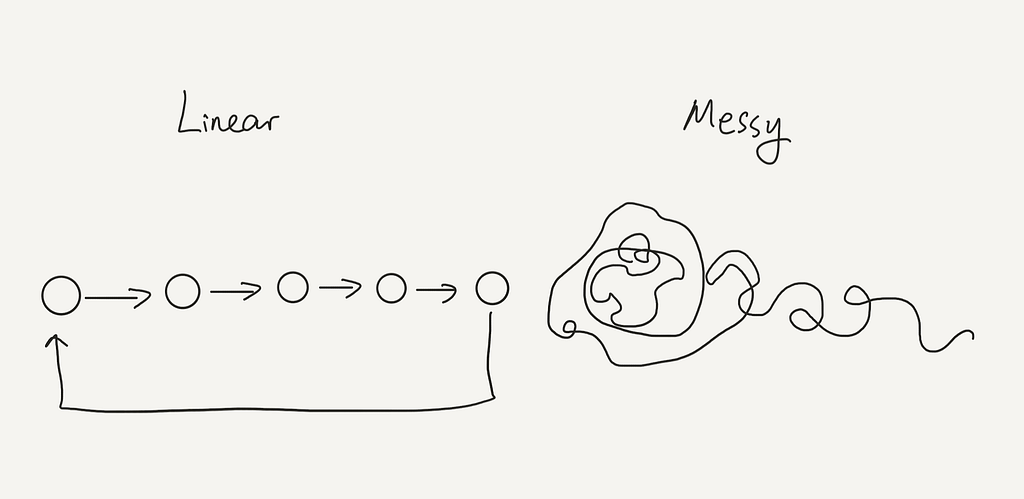
- At Google, I spend a lot of time understanding problem spaces and evaluating solutions. A key problem-solving capability I learned recently is top-down critical thinking and bottom-up creative thinking. Both skills make me more fluent in problem solving. For example, if I want to propose a new feature, I can use the critical thinking framework to do the analysis by myself, thinking through the value for different users, the risks, and feasibility. Then I can show my thought process to my team. With the creative thinking framework, people can propose new ideas and collectively decide which way forward is best.
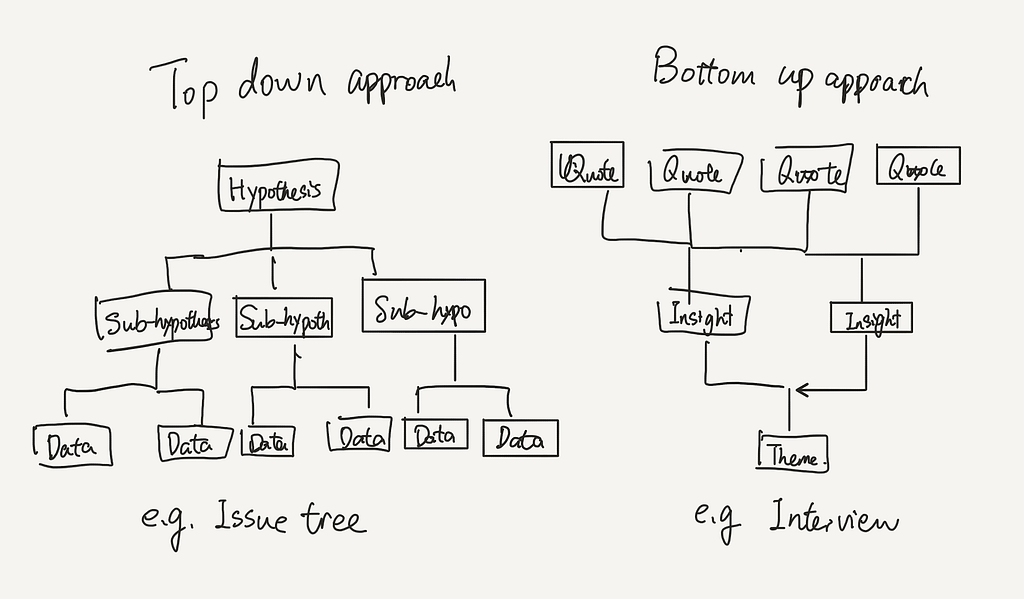
3. Respect external factors
At one point, I felt stagnant and disillusioned. One project I spent a whole year on was discarded. I learned a lot, but I didn’t have much to show for my performance review. My insecurities grew as I questioned, “Am I growing? Did I really do something I’m proud of?” I considered transferring to another team.
But this change turned out to be a blessing in disguise. The following project had wider scope, bigger impact, and more resources. Now, I feel more energized, hopeful, and excited.
This was an aha moment for me: I realized success is not always under my control. External factors matter. When we fail, we can recognize what’s out of our control and detach ourselves from failure. By respecting external factors, we become more resilient and trusting towards the learning process.
When things don’t go your way—if a project fails or you don’t get the promotion you wanted — try this thought process. First, accept your feelings (“I feel deflated”). Investigate why you’re feeling this way (“I work so hard, but I don’t get recognized.”). De-identify with that experience (“Whether this project launches or not is beyond my control. I did my best to empower my team.”). And revisit your aspirations (“I’m improving every day. Looking back, I grew hugely.”). Check out this talk: 5 Hindrances to Self-Mastery, to learn more.
Two years ago, I attributed getting into Google to hard work; I hadn’t appreciated the numerous external opportunities that helped me grow. Now I’m grateful for what I once took for granted.
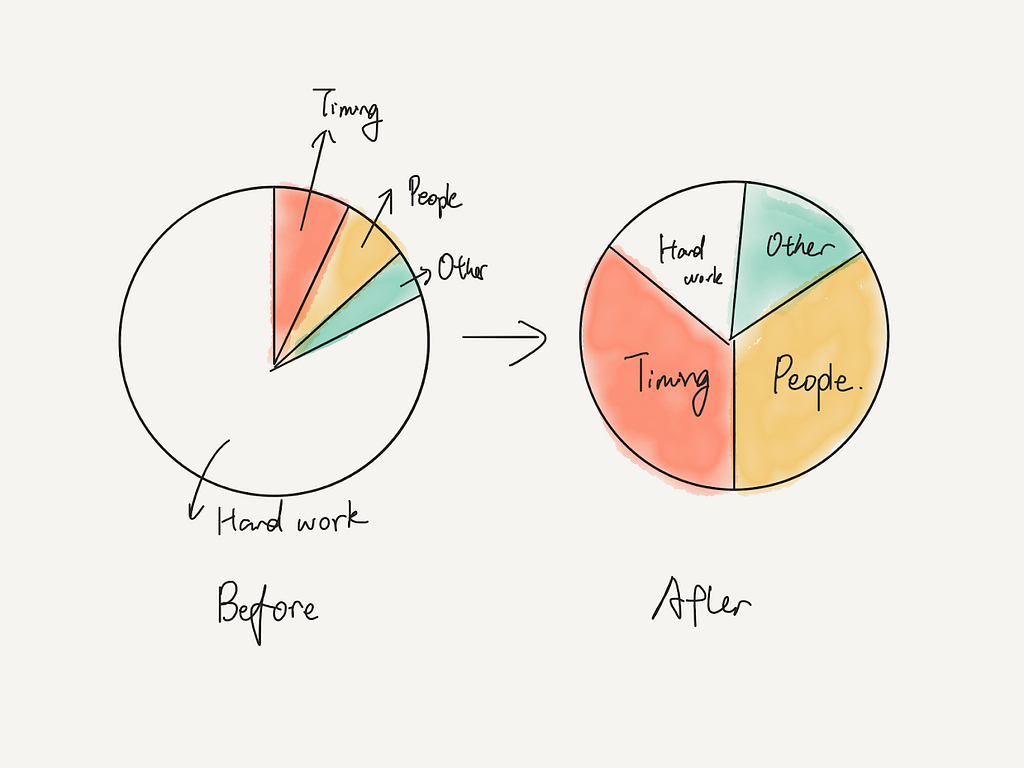
I understand more deeply the influence my colleagues have on me. I value the responsibilities they share, and their trust in me regardless of my years of experience. I see how the people I work with have cleared obstacles and empowered me to be the best I can be.
This, in a larger perspective, is the power of culture. Culture is like the water to a fish. I don’t realize when I’m swimming in it. But in retrospect, I see how I feel comfortable to be authentic to myself in a healthy environment. I feel supported and heard even in this pandemic. I’m given endless opportunities to make a difference.
External factors, like timing, people, and culture, help me grow beyond my own hard work. Respecting those factors means recognizing them, and being more thoughtful towards what’s worked well throughout the seasons to help me reach my full potential.
I’m grateful for this epic journey in the past two years, and I’m looking forward to what the future holds. My hope is to contribute more to my UX community and spark the conversation on retrospection, learnings, and growth. I would love to hear more people share their thoughts on their journeys. Please get in touch via LinkedIn.
Many thanks to Erin Kim and Carly Ayres for providing helpful feedback on the article before publication!
Recommended resources
- Learning How to Learn: Powerful mental tools to help you master tough subjectsMindshift: Break Through Obstacles to Learning and Discover Your Hidden PotentialThe Science of Success: What Researchers Know that You Should KnowCracked it!: How to solve big problems and sell solutions like top strategy consultantsPersonal values assessment (PVA)How I landed a job in UX Design at Google
Learnings from a Junior Designer at Google was originally published in Google Design on Medium, where people are continuing the conversation by highlighting and responding to this story.

